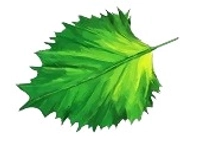
Joginder Nursery
Product details
Introducing the Bargad Plant, also known as the Banyan Tree, a revered symbol of strength and longevity in Indian culture, now available at our online nursery shop. The Bargad Plant is not just a majestic addition to your garden but also a treasure trove of medicinal benefits. Let's explore its medicinal uses and learn how to care for this iconic plant.
Medicinal Uses of Bargad:
Respiratory Health: The leaves of the Bargad Plant are known for their therapeutic properties in treating respiratory ailments such as asthma, bronchitis, and cough. A decoction made from the leaves can help clear congestion, soothe inflamed airways, and promote easier breathing.
Wound Healing: Bargad has been traditionally used for its wound-healing properties. The latex obtained from the tree bark is applied topically to cuts, bruises, and minor wounds to accelerate the healing process and prevent infections.
Digestive Disorders: The bark and aerial roots of the Bargad Plant are believed to possess digestive benefits. Consuming extracts or decoctions made from these parts of the plant can help alleviate digestive issues like diarrhea, dysentery, and stomach ulcers.
Anti-inflammatory: Bargad exhibits potent anti-inflammatory properties, making it beneficial in managing inflammatory conditions such as arthritis, gout, and rheumatism. Applying a paste of Bargad leaves or consuming extracts can help reduce pain and inflammation in affected joints.
Oral Health: Chewing tender twigs or leaves of the Bargad Plant is believed to promote oral hygiene and treat dental problems like toothache, gum infections, and mouth ulcers. The natural antibacterial properties of Bargad help combat oral pathogens and maintain oral health.
Plant Care Instructions:
Light and Temperature: Bargad plants thrive in full sunlight to partial shade. Place your Bargad Plant in a location where it can receive ample sunlight for at least 4-6 hours a day. Ensure the temperature remains moderate, between 20°C to 35°C, to support healthy growth.
Watering: Keep the soil consistently moist but not waterlogged. Water your Bargad Plant regularly, especially during the dry season. Allow the top inch of soil to dry out between waterings to prevent waterlogging, which can lead to root rot.
Soil and Fertilization: Bargad plants prefer well-draining, fertile soil. Use a mixture of garden soil, sand, and organic compost for optimal growth. Fertilize your Bargad Plant with a balanced fertilizer once every 4-6 weeks during the growing season to provide essential nutrients.
Pruning: Regular pruning is essential to maintain the shape and size of the Bargad Plant. Trim back any overgrown branches or foliage to encourage new growth and maintain the desired shape of the tree.
Support: As the Bargad Plant grows, provide adequate support to its branches to prevent them from sagging or breaking under their weight. Use stakes or ties to support heavy branches and encourage upright growth.
Pest and Disease Control: Bargad plants are relatively resistant to pests and diseases. However, occasional infestations by pests like aphids, mealybugs, or scale insects may occur. Inspect your plant regularly and treat any infestations promptly with organic pesticides or neem oil.
Repotting: Repot your Bargad Plant every 2-3 years to refresh the soil and provide more space for root growth. Choose a larger pot with good drainage to accommodate the expanding root system of the plant.
Please Note: Images are for reference purposes only. Actual product may vary in shape or appearance based on climate, age, height, etc. The product is replaceable but not returnable.
Similar products